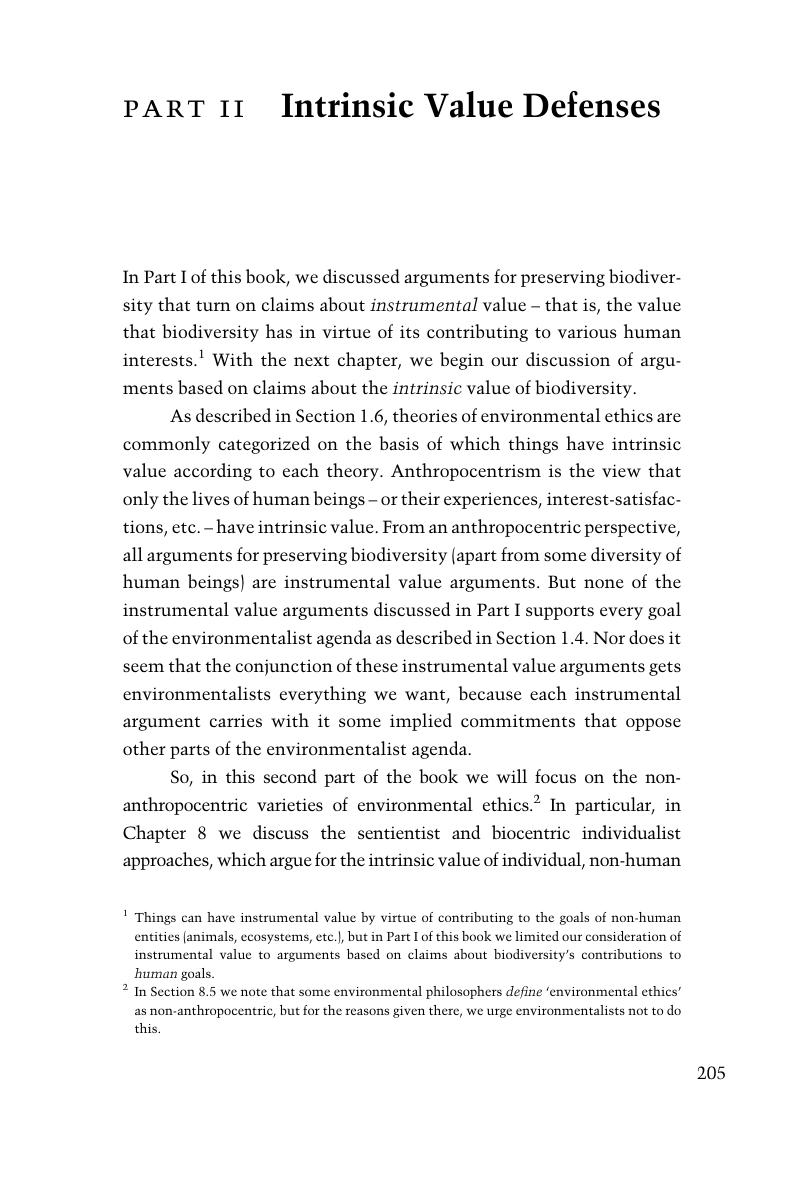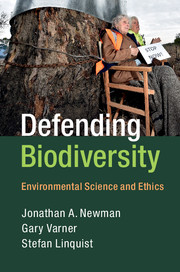Part II - Intrinsic Value Defenses
Published online by Cambridge University Press: 06 October 2017
Summary

- Type
- Chapter
- Information
- Defending BiodiversityEnvironmental Science and Ethics, pp. 205 - 417Publisher: Cambridge University PressPrint publication year: 2017
References
7.5 Further Reading
8.9 Further Reading
9.5 Further Reading
10.6 Further Reading
In this chapter we have concentrated on Callicott’s interpretation of Leopold as an ecoholist, because that has been the most widely read and discussed interpretation. For an alternative, the reader should see either of the following works by Bryan Norton, who reads Leopold as a pragmatist who believed that the implications of ecoholism and a kind of enlightened anthropocentrism converge in practice. Readers interested in Leopold’s development as a scientist should see his professional biography by Flader (1974).



